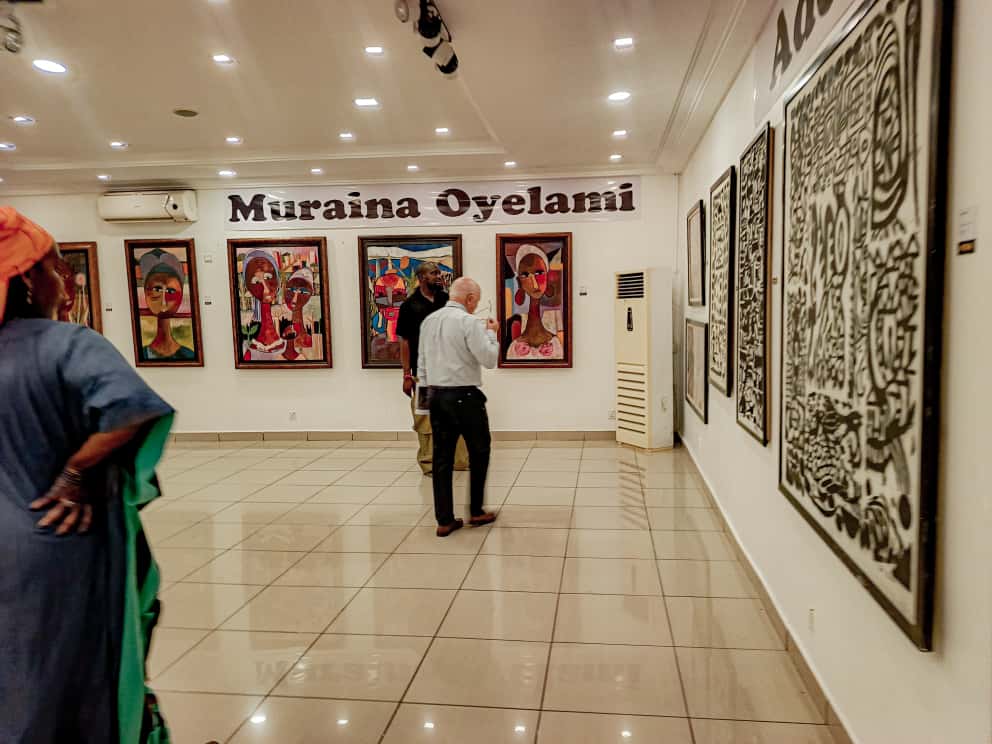
Thought Pyramid Art Centre Abuja on Saturday, 18 October launched the historic group exhibition—Vision of The Last Quarter II: From Myth to Memory – The Osogbo Legacy—honoring the enduring spirit of Osogbo Art and the cultural legends who birthed it. The exhibition is billed to remain open for viewing till Friday, 31 October 2025.
Following the landmark 2018 Lagos edition that celebrated 50 years of Osogbo Art, the 2025 exhibition passes the baton to Abuja, inviting audiences to rediscover the mystical and symbolic art movement that changed the face of Nigerian modernism. Featuring seminal works by Twins Seven Seven, Jimoh Buraimoh, Adebisi Fabimbe, Muraina Oyelami, and Rufus Ogundele, this showcase is a tribute to a legacy born in myth, matured in movement, and cemented in memory.
This year’s theme, From Myth to Memory, reflects on the transformation of Osogbo Art from its deeply spiritual, Yoruba cosmological roots to its celebrated status as a globally respected cultural heritage. The exhibition offers a rare opportunity to connect with the timeless beauty, storytelling, and symbolic language of Osogbo’s legendary artists.
Excerpt from Curatorial Statement:
Revisiting the Legacy of the Osogbo Art Movement
“Vision of the Last Quarter II” is a profound curatorial meditation on one of the most transformative artistic movements in postcolonial Africa: the Osogbo Art Movement. Emerging in the crucible of Nigeria’s cultural renaissance during the 1960s, the movement was not merely an artistic development—it was a radical reclamation of identity, memory, and indigenous epistemologies in the aftermath of colonial disruption.
The exhibition revisits this seminal moment with a critical yet reverent eye, foregrounding the enduring legacies of five foundational figures—Twins Seven Seven, Jimoh Buraimoh, Adebisi Fabunmi, Muraina Oyelami, and Rufus Ogundele—whose works serve as visual testaments to a movement that was, and remains, deeply embedded in Yoruba cosmology, spirituality, and communal knowledge systems.
At its heart, Osogbo Art was a collaborative crucible where tradition met innovation. Rooted in the sacred and performative traditions of Yoruba culture—Òrìṣà worship, oral storytelling, music, masquerade, and textile arts—the Osogbo artists developed a singular visual language. This language defied the binaries of ‘primitive’ and ‘modern’, ‘local’ and ‘international’, instead creating a syncretic aesthetic that was at once mythic and modern, ritualistic and revolutionary.
Far from being confined to galleries or elite institutions, the Osogbo movement was born of grassroots engagement—of artists who were often self-taught, who worked outside formal academies, and who saw their practice as a living, breathing act of cultural preservation and renewal. These artists channeled ancestral energies and communal narratives, turning canvas, wood, and mosaic into sacred vessels of meaning. In their hands, art became a portal—a visionary space for dreaming futures rooted in indigenous knowledge and memory.
This exhibition, marking 57 years since the consolidation of the movement, seeks not only to honor its past but to interrogate its ongoing relevance. In a world increasingly grappling with the aftershocks of colonialism, globalization, and cultural erasure, the Osogbo Art Movement stands as a vital model of decolonial creativity. It reminds us that art is not merely a product of individual genius, but a communal offering—an invocation of spirit, place, and historical consciousness.
Vision of the Last Quarter II is thus not a retrospective in the traditional sense. It is a return, a reactivation, and a reimagining. It invites us to engage with these visionary works not as relics of a bygone era, but as living archives—charged with spiritual resonance and contemporary urgency. The bold lines, intricate patterns, and esoteric symbols present in the works of these five masters continue to echo, challenging us to rethink the boundaries of African modernism and to embrace a more expansive, cosmologically attuned vision of art.
Ultimately, this exhibition affirms the Osogbo artists as cultural custodians, mythmakers, and revolutionaries—whose legacies illuminate a path toward radical self-definition and artistic sovereignty. In revisiting their vision, we encounter not the end of an era, but the continuity of a sacred dialogue between past and future, tradition and transformation.
Let this second vision of the last quarter be a call to remembrance—and to reawakening.
Jeff Ajueshi. ( Chief )
Lead Curator
Thought Pyramid Art Centre
